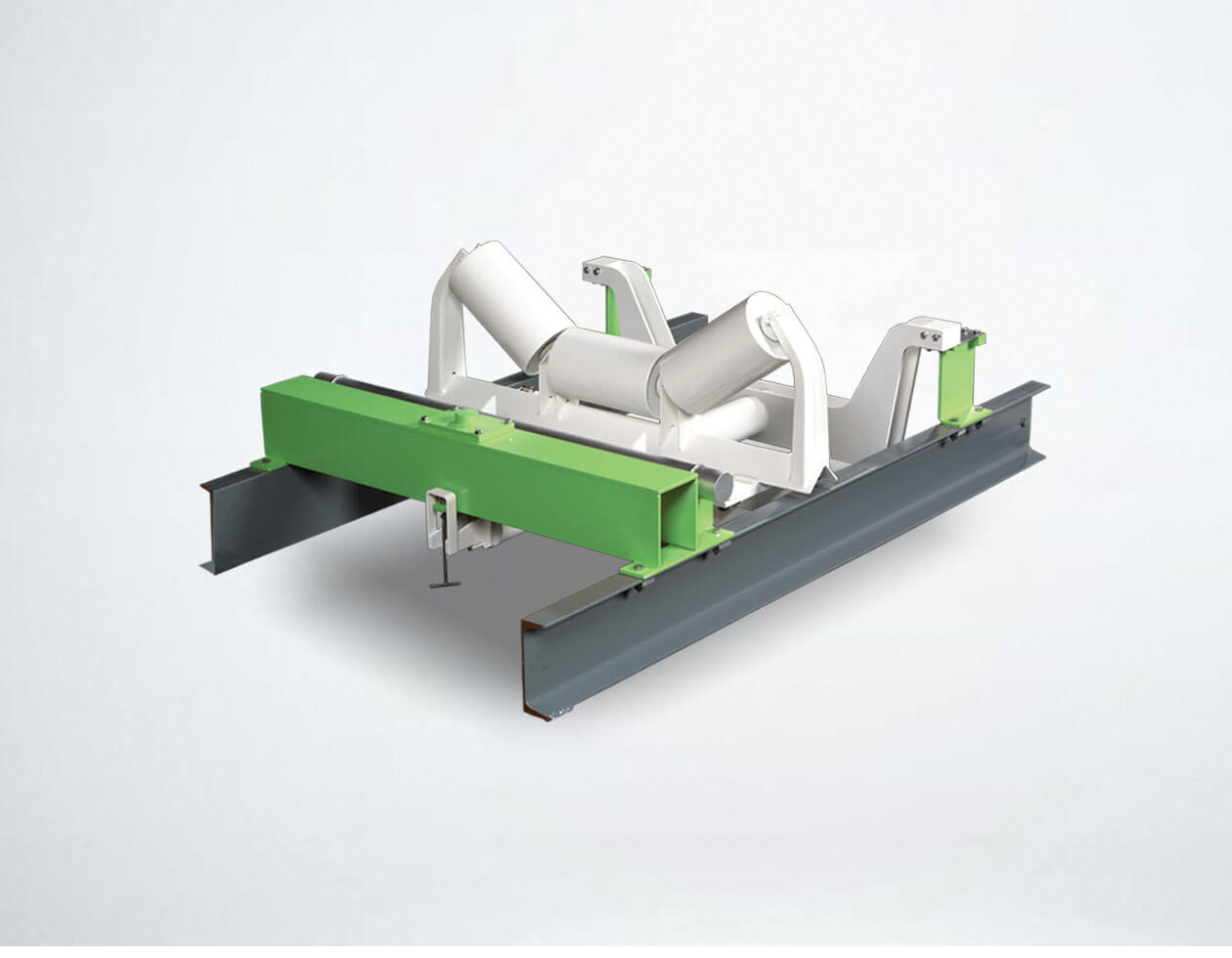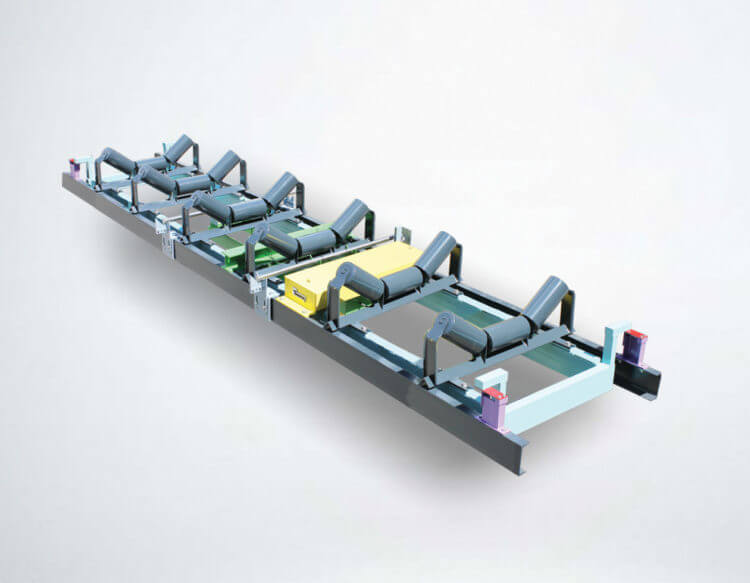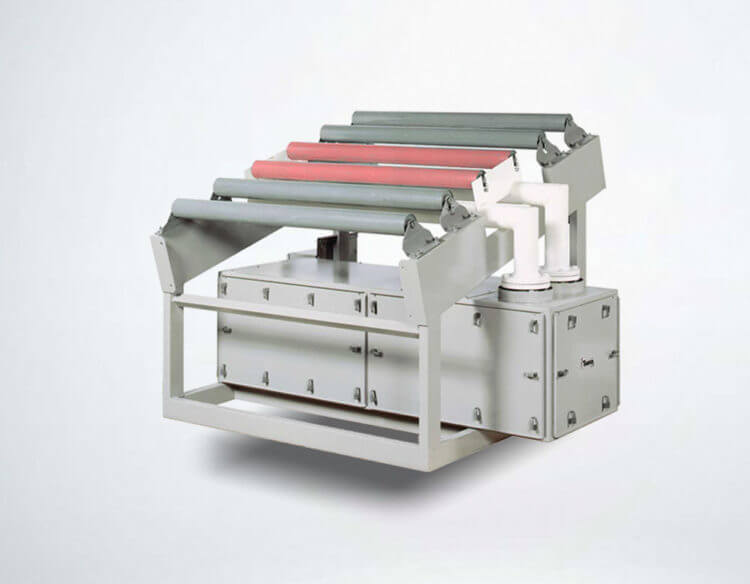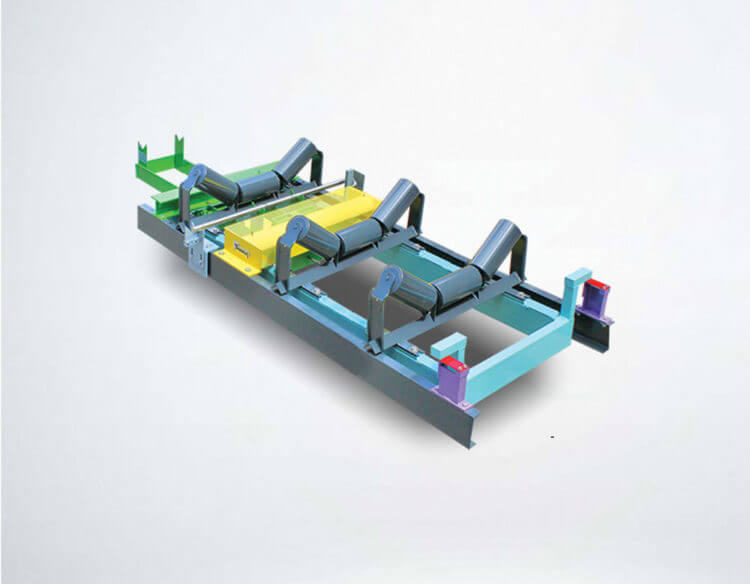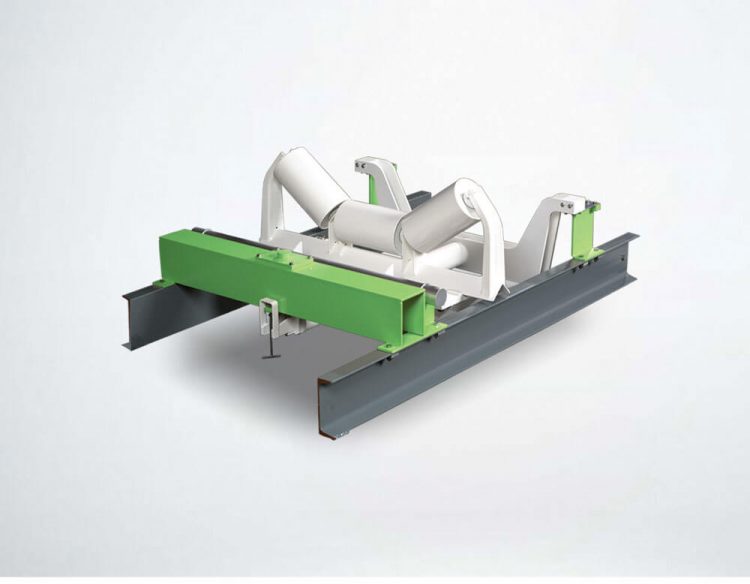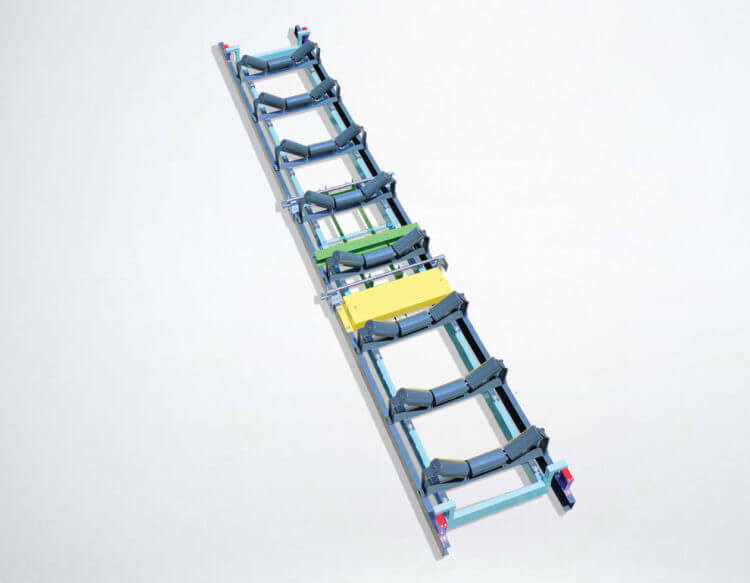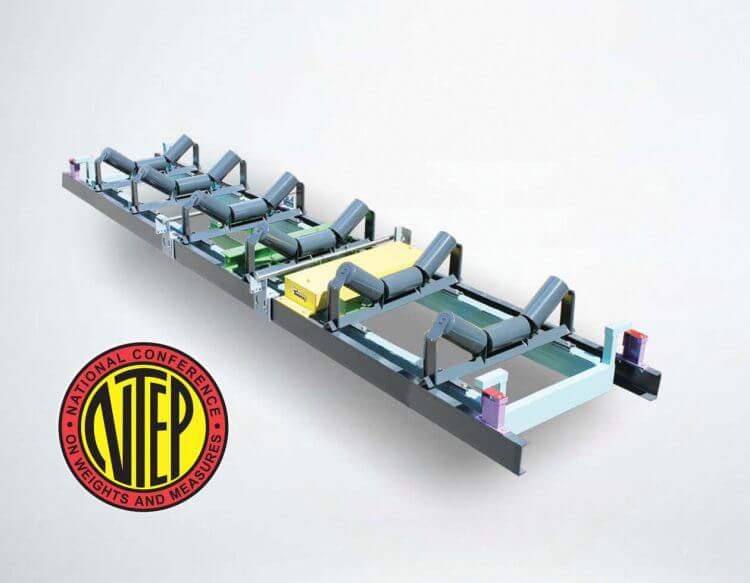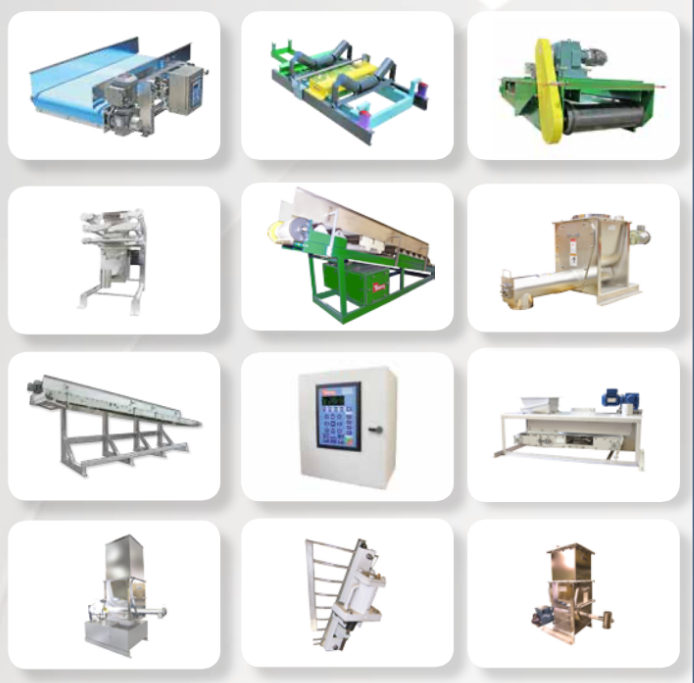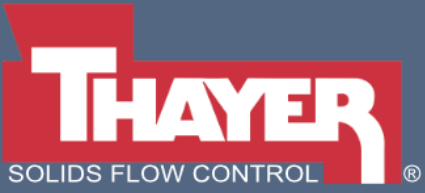Description
1RF-4ASG “Quarry King” Conveyor Belt Scale
The “Quarry King” conveyor belt scale’s suspension system is fabricated from slim flat metal elements (carbon steel standard, stainless steel optional) which are precision laser cut from sheet stock and welded to, and branch outwardly from, a centrally positioned tubular “spine” shaft running axially to the conveyor and directly under the center line of the belting. These elements, two of which support the weigh idler, lie in a vertical plane so as to eliminate tare build up areas. There are no structural elements running parallel to and in close proximity with the conveyor side stringers as in conventional designs to trap and hold aggregate material spilling from the edge of the belting.
For outdoor conveyor weighing of dusty fines and “stone like” aggregate materials where rugged construction and spill-proof/jam-proof suspension design are the most essential attributes. Working in combination with Thayer Scale’s proven “Rocking Flexure” fulcrums is a completely new “pipestem” single idler suspension system incorporating built-in storage means for its calibration weight (no test chains required).
This combination of unique elements provides important advantages for neglected-maintenance operations where on-going dust build-up and spilled aggregates are known to foul conventional suspension designs. Applications include troughed belt conveyors of 14-48″ belt widths (Series 1RF-3A for 14″, 18″, 24″, 30″; Series 1RF-4A for 36″, 42″, 48″ belt widths) operating at speeds up to 600 fpm and inclines up to 18 degrees.
Secondary Lever System
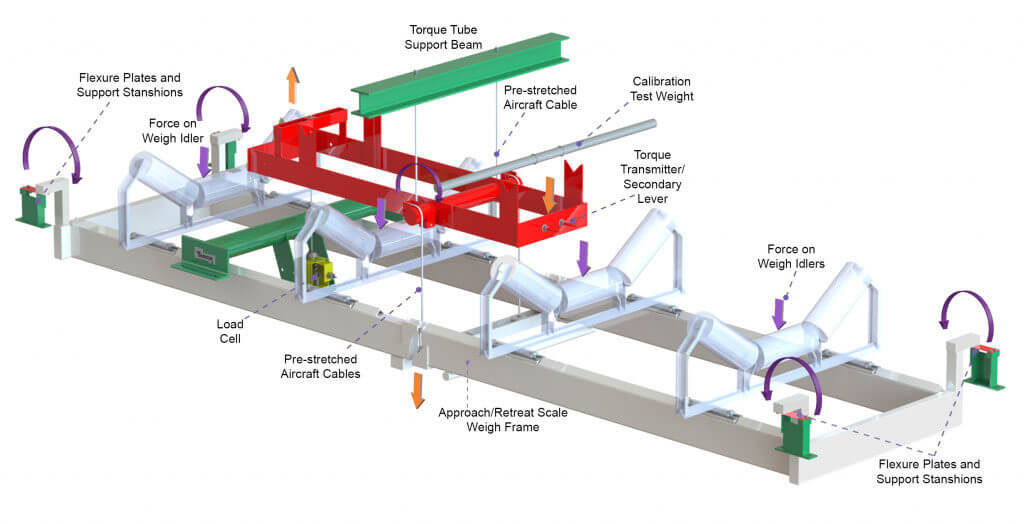
Benefits
- Excellent Value
- Easy to install/startup
- Accurate measurement
- Long term calibration stability
- Quick calibration method using supplied test weight
Key Design Features
- Test Weight is easily accessed enabling trouble-free scale calibration
- Easy set-up, calibration and maintenance
- Emulates the loading responsiveness and stability of a multi-idler belt scale
Quarry King suspension system
The suspension system is longitudinally restrained and pivoted at the in-feed (approach) end on Thayer Scale’s proprietary RF Fulcrum arrangement, while the downstream end is supported from a single NTEP certified strain gauge load cell loaded in pure tension, protected from effects of all extraneous lateral forces (belt tension, friction, torsion, etc.). A key advantage is that the load cell can be quickly and easily removed and replaced without disturbing the weigh idler itself, thereby eliminating the tedious task is re-setting and aligning the idler, and conducting another material test upon re-commissioning. The non-weighed Bridge Element that supports the load cell also includes the supporting brackets for storing the Test Weight which can be easily moved to its “calibration” position on the suspension system whenever desired.
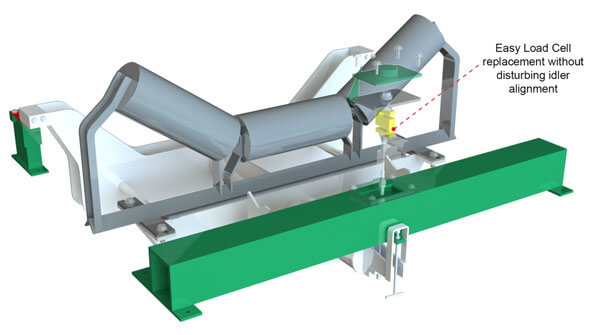
Precision Belt Speed Measurement
Accurate belt speed measurement is a critical element of any high accuracy belt scale. Many low-cost, single-idler belt scales include a tail-pulley mounted speed encoder to save money. Unfortunately, a tail-pulley mounted encoder will not account for belt stretch, or belt slippage. Accurate belt speed measurement requires the use of a precision wheel and pulser. A spring is used to maintain proper contact pressure of the wheel with the tension side of the belt in all operating conditions. The THAYER belt travel pulser assembly includes a precision cast/machined wheel with a “pre-calibrated” circumferential tolerance of ± 0.05% and a high resolution digital transmitter. The transmitter produces pulses equivalent to 1/100 to 1/200 of a foot of belt travel. The speed pick-up wheel has a narrow face width so it is less susceptible to material build-up, which can result in speed measuring errors. Since belt stretch is not constant throughout the length of the conveyor, and therefore, can affect speed measurement, the speed pickup produces a more accurate speed signal than that which is produced by tail pulley mounted speed encoders.Accurate belt speed measurement requires the use of a precision wheel and pulser.
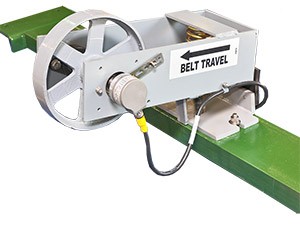
Easy set-up, calibration and maintenance
Thayer Scale’s new Model I-340 Conveyor Belt Scale Integrator is a full featured instrument specifically designed to match with Thayer’s single idler “Quarry King” Belt Scale. It performs the same functions as an instrument costing many times more without sacrificing accuracy that is associated with THAYER weighing products. Simplicity of use has always been a very important factor in designing an instrument and the Model I-340 has inherited all the time and labor saving methods THAYER has developed over the years.
The Model I-340 enables easy set-up, calibration and maintenance. Its intuitive menu interface is very easy to use. Step-by-step on-screen instructions guide the user through set up, calibration and customization of inputs and outputs. Multiple checks and balances built into the software virtually eliminates human error.
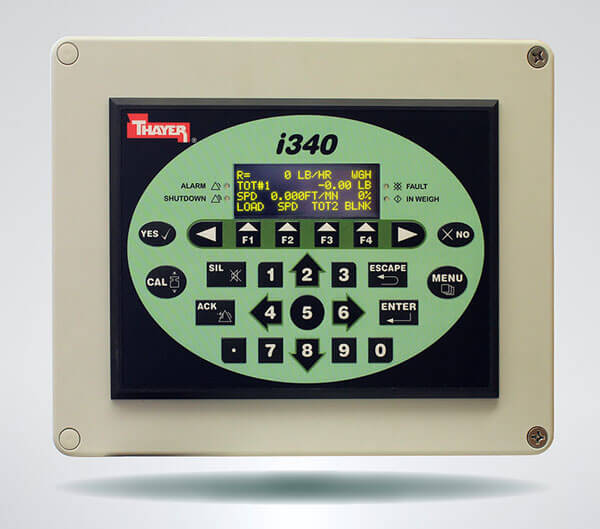
Virtual Weigh Span Technology
As an added bonus, the Model I-340 Integrator contains special patented software package called “Virtual Weigh Span” Technology that has been specifically designed to be used with lower cost and lower accuracy single idler belt scales. Virtual Weigh Span emulates the loading responsiveness and stability of a multi-idler belt scale, resulting in a significantly less “noisy” signal for integration and totalization of weight.

Low Maintenance
A key advantage of the Quarry King suspension system is that the load cell can be quickly and easily removed and replaced without disturbing the weigh idler itself, thereby eliminating the tedious task of re-setting and aligning the idler, and conducting another material test upon re-commissioning. In addition, the included Test Weight is easily accessed enabling trouble-free scale calibration. The Test Weight is positioned either in an operating position, or in a calibration position located on supporting brackets, eliminating the risk of misplacing the Test Weight . Heavy calibration test chains are not required with the Quarry King.

